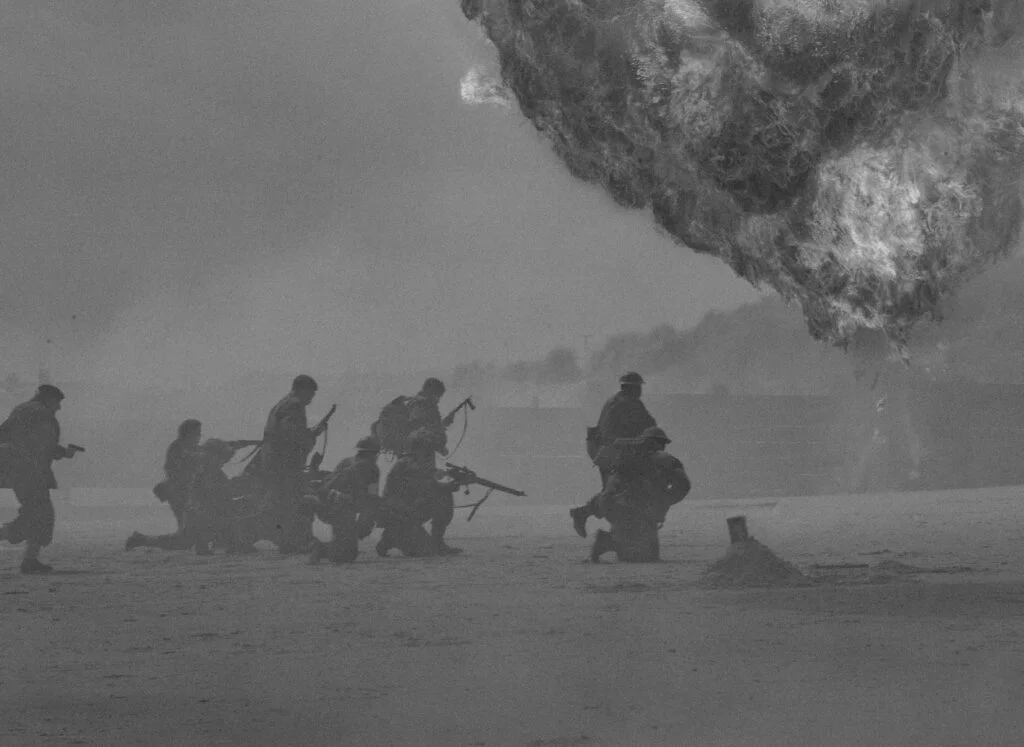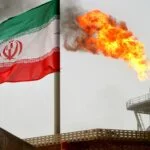Interstate wars are the greatest threats to world peace and security. Historically, wars between countries have taken millions of lives, displaced billions of people, and caused trillions of dollars in destruction. Fortunately, the world enjoyed a gradual decline in the number of interstate wars since the end of WWII. Even the world saw ‘zero interstate war’ from 2005 to 2007.
However, we can see a gradual increase in the interstate war from 2015 onward; the most recent example is the Ukraine war. Although interstate war is not going to surpass the ongoing intrastate war in number, there are huge possibilities that these intrastate wars will become internationalized due to growing competition and geopolitical interests of regional and global powers.

Besides these, other factors like shifting geostrategic posture, increasing polarization, and territorial disputes drive states to fight against each other. In this context, countries must go beyond their national interests to see the true consequences of these wars. Moreover, international organizations must be more proactive in monitoring and facilitating dialogues at different levels.
Rising Number of Interstate Wars in the World
Since the end of the Second World War, interstate violence has decreased the most. It is the civil or interstate conflict that has increased significantly since 1946. However, we are seeing a gradual increase in interstate wars recently. Moreover, internal conflicts are becoming international, as regional and global powers support different parties with troops and equipment. These confrontations might escalate into more direct, major power conflicts.

Most interestingly, with the changing nature of conflict, countries battle for influence by using sanctions (US sanctions on Iran and North Korea), trade wars (US-China trade war), electoral interference (Russian interference in the US election), and diplomatic boycott (Arab countries cut ties with Qatar in 2017 over the accusations of funding terrorism) which are less violent than conventional war, but still cause severe damage to people and their governments.
This graph shows a decrease in interstate war and an increase in intrastate war from 1946 to 2020. It also shows the absence of colonial war and a gradual decline in battle-related deaths since the 1970s. However, we can identify the number of international civil wars has always been the highest. Most importantly, after a relative absence of interstate wars from 2005 to 2015, the number of interstate wars has been increasing. Many ongoing conflicts between states signal the return of interstate war.

Table 1: Ongoing Interstate Wars
| Interstate War | Conflicting Parties | Intensity |
| Ukraine War | Russia, Ukraine, and Western powers | Medium intensity war |
| Armenia-Azerbaijan conflict | Armenia and Azerbaijan | Medium intensity war |
| Kyrgyzstan-Tajikistan Border Clashes | Kyrgyzstan and Tajikistan | Low-intensity war |
| Syrian War | Syrian groups and major global powers like the US, Russia, France, Turkey, and Iran. | Medium intensity war |
| Yemeni War | Yemeni groups and major regional powers like the KSA and Iran. | Medium intensity war |
| Palestine-Israel Conflict | Palestine and Israel | Low-intensity war |
| Ethiopia-Sudan Border Dispute | Ethiopia and Sudan | Minimum violence |
| Kosovo-Serbia Tension | Kosovo and Serbia | Minimum violence |
| Cyprus Problem | Cyprus and Turkey | Minimum violence |
| Israel-Iran Tension | Israel and Iran | Minimum violence |
| India-Pakistan Disputes | India and Pakistan | Low-intensity war |
| China-India Border Clashes | China and India | Low-intensity war |
| Taiwan Crisis | Taiwan, the US, and China | Minimum violence |
| South China Sea Disputes | China, Brunei, Indonesia, Malaysia, the Philippines, Taiwan, Vietnam, and the US. | Minimum violence |
Note: High intensity (100,000 per year deaths); Medium intensity (1,000 per year deaths); Low intensity (25 per year death), and Minimum violence (0-25 per year deaths)
The Reasons Behind the Increasing Interstate War

Kenneth Waltz’s reasons for conflict in his book “Man, the State, and War” are still relevant today. Aggressive leaders, expansionist states, and the anarchic nature of the international system drive countries to war. The global system is unchecked, as there is no hierarchical authority to control the behaviour of states, and states constantly use war to establish control over the system. We can use this neo-realist prism to explain the previous and ongoing interstate wars. However, other reasons contribute to the rise in interstate wars in the present day.
Shifting Geostrategic Focus
Geopolitical competition has been at the centre of the growing interstate wars. The notable geostrategic shift that the world has experienced in this century is the US’s rebalancing strategy toward the Indo-Pacific region under the “Indo-Pacific Strategy”. As the US shifted its focus toward the Indo-Pacific, we can see other countries like China through its “Belt and Road Initiative” and Japan, with its “Free and Open Indo-Pacific Strategy”, are trying to strengthen their foothold in the area.

The growing significance of Africa among powerful states as a resource-rich continent is also noticeable. Besides these, growing competition revolving around strategically significant areas like the South China Sea, Taiwan, and Ukraine has also intensified and encouraged states to confront each other militarily.
Rise of New Powers
We can see the “Thucydides Trap” in work as the US has been very concerned about the rise of China as a powerful state. The US has openly identified China as a national security threat and has taken several counter-strategies to disrupt Chinese growth. Both countries have already engaged in a trade war and confronted each other in the South China Sea. Moreover, despite several Chinese warnings, the US and China came close to a significant breakdown when Nancy Pelosi visited Taiwan last year. Besides, the reemergence of Russia as significant power under the leadership of Putin has been another issue that ultimately led to the Ukraine war. Moreover, the rise of India and Turkey as powerful countries has made the international system more balanced and chaotic simultaneously.

Growing Polarization
The world is now experiencing a return to Cold War-like politics of polarization and isolation. Recently, the German Chancellor warned the world about the danger of a new Cold War where the world would be divided into competing blocs similar to the Cold War period. Now, we can easily see the East-West division is sharpening. Instead of Capitalism vs Communism, the ideological faultline will be Democracy vs Autocracy. The possibility is real, as President Biden framed the Russian invasion as a “battle between democracy and autocracy”. Moreover, the US has embarked on a strategy of Containment 2.0 to isolate China and Russia by using sanctions and forming new alliances. We can see the rise of new partnerships like the QUAD, AUKUS, and Five Eyes and the expansion of existing security alliances like NATO, which ultimately led Russia into a bloody war in Ukraine.
Growing Militarization
Growing militarization is another reason behind the increasing interstate war. The US exported $50 billion worth of arms worldwide and had a defence budget of $722 billion in 2022. On the other hand, the Chinese military budget has increased from a nascent $14.6 billion in 2000 to a staggering $229 billion in 2022. Most interestingly, Germany committed $112.7 billion in defence last year.

Japan, dependent on outside powers for its security, has boosted its defence budget to $55 billion, a 20 per cent increase from the previous year. Along with this, developing sophisticated military equipment, notably the Unmanned Aired Vehicle (UAV), has made the war less risky and more convincing. Stephen M. Walt pointed out that offensive capability is one factor driving a state to war, as it boosts states’ confidence about winning a war. Even small power with good offensive capability and aggressive intention is considered a threat to peace and security. North Korea is the best example of it.
Territorial and Border Disputes
Unresolved territorial disputes between countries often drag countries into the battlefield. The most historical and prominent example of territorial conflict is the ongoing Palestine-Israel war. Since 1948, both countries have fought wars that seriously disrupted regional peace and security. The conflict is still ongoing in 2023 without any sign of a break. Likewise, the Armenia-Azerbaijan conflict over Nagarno-Karabakh, the India-Pakistan conflict over Kashmir, and the China-India dispute over Aksai Chin have the potential to turn into much broader conflicts. Nonetheless, territorial disputes in the South China Sea might invite extra-regional powers like the US and its European allies to fight against China if the situation further escalates.

Internationalization of Intrastate Conflict
The growing participation of outside powers in intrastate conflicts is also an essential factor. War in Syria and Yemen are the primary examples of how intrastate wars become internationalized. Experts have identified the intervention fatigue of powerful countries as one of the reasons behind the internationalization of the intrastate conflict. There are tons of examples where Western countries have intervened in the name of fighting terrorism and protecting human rights inside a particular country. Moreover, the rising involvement of transnational terrorist and criminal groups like the Islamic State (IS) has encouraged countries to intervene to protect national security.

Economic and Energy Interests
One of the reasons behind the two world wars was the establishment of control over colonies, as powerful countries needed raw materials for their economic development. Later, the liberal idea of economic connection to peace was floated. It postulated that increased trade connection and interdependence among countries would eventually decrease the possibility of war. However, the opposite can also happen as tension over scarce resources like energy and access to the market might lead countries to conflict.
And it is true in the 21st century as countries are fighting to ensure their energy security and market access. For instance, Paul Wolfowitz acknowledged that the 2003 US invasion of Iraq was about securing oil permits. Moreover, energy has been a conspicuous factor in the Iran-Iraq War of 1980-1988 and the Gulf War of 1990-1991. Given the Ukraine war and global shortage of energy output, the countries might become involved in an energy war in energy-rich regions.

Climate and Conflict
Climate may not be the direct cause of interstate conflict. However, it may affect other drivers of conflict. Rising temperature, sea-live rise, and landfall can disrupt economies, agriculture, and livestock production and exacerbate group inequalities. Together with other causes of conflict, these factors heighten the likelihood of violence at both intrastate and interstate levels. We can identify the environmental side of the Palestine-Israel conflict as both sides fighting over water-sharing issues. Currently, 85% of the area’s shared water is under Israel’s control, including both surface and groundwater, leaving just 15% for the Palestinians in the West Bank and Gaza. Although this is not the only reason, it is one of the main reasons behind the conflict.

Way Ahead
Expecting peace in a world where the power of many countries remains unchecked is challenging.
States are more susceptible to their idiosyncratic ideologies and biases when their leaders are unrestrained and unaccountable for their acts.
In this regard, our institutions have a massive role to play. International and regional organizations should make the costs of war challenging to ignore for the leaders and work together to minimize misperception, promote dialogue, and foster cooperation.
About the Author

Muhammad Estiak Hussian is a Research Analyst at the KRF Center for Bangladesh and Global Affairs (CBGA). Previously, he finished his BSS from the Department of International Relations, University of Dhaka. Now, he is pursuing MSS in Security Studies from the same institution. His main research interests are foreign policy analysis of Bangladesh, regional politics of South Asia, and world refugees and migration.







[…] integrates economic, diplomatic, informational, and military resources. Notably, China’s military budget has experienced significant growth, increasing from a modest $14.6 billion in 2000 to a substantial […]
[…] integrates economic, diplomatic, informational, and military resources. Notably, China’s military budget has experienced significant growth, increasing from a modest $14.6 billion in 2000 to a substantial […]
[…] στρατιωτικούς πόρους. Συγκεκριμένα, ο στρατιωτικός προϋπολογισμός της Κίνας γνώρισε σημαντική ανάπτυξη, αυξάνοντας από […]